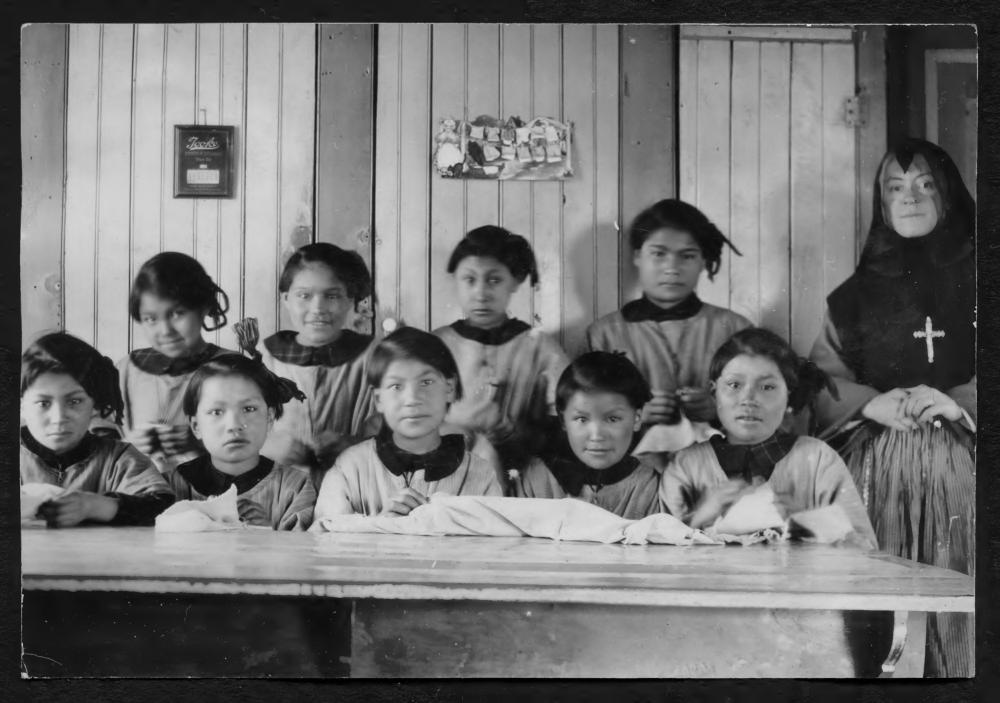Bronze plaques will eventually tell the history of the Portage La Prairie Residential School in Manitoba and the Shubenacadie Residential School in Nova Scotia, as both have been designated National Historic Sites.
The National Centre for Truth and Reconciliation (NCTR) nominated the residential school system for consideration as a national historic event.
“This announcement marks a major turning point in our collective duty to remember,” said Ry Moran, director of the NCTR in Winnipeg.
“Today we honour the courage, strength, and resilience of Survivors and their families who have shared their truths. For years, the history of residential schools in Canada has been excluded from education curricula and completely unknown by many Canadians.”
The announcement was made Tuesday by Jonathan Wilkinson, the minister of environment and climate change and minister responsible for Parks Canada.
It is a fulfillment by the federal government of Call to Action 79 of the Final Report of the Truth and Reconciliation Commission, which recommended national commemoration of residential school sites and the history and legacy of residential schools.
“Today’s designation recognizes the national historic significance of the Residential School System as a shameful period in Canada’s history,” Wilkinson said in a release.
Long Plain First Nation in Manitoba nominated the former Portage La Prairie school for designation. It is currently used as office space.
“This designation today has been the result of many years of hard work,” said Long Plain Chief Dennis Meeches.
“This site will always represent a horrific past for Survivors and their families. Many Survivors and community members have since joined in the effort to preserve the building and their stories because this is also a story of resilience and a long journey towards healing.”
The Shubenacadie site is now occupied by a plastics factory. The school building was destroyed by fire in 1986.
Tim Bernard is executive director of the Mi’kmawey Debert Cultural Centre. He said more than 1,000 Mi’kmaw and Wolastoqiyik students attended Shubenacadie between 1930 and 1967.
“Although the building is no longer standing,” he said, “our Survivors have prioritized a National Historic Site designation, and we, as a community, will have the opportunity to continue our journey of healing.

Other Indigenous leaders were quick to praise the decision.
Assembly of First Nations National Chief Perry Bellegarde expressed encouragement.
“This designation is another step toward Canada fully recognizing the human rights violations that took place in Residential Schools,” he said.
Manitoba Keewatinowi Okimakanak Grand Chief Garrison Settee acknowledged the pain residential schools had caused.
“We still have a lot of work to do to heal from the inter-generational effects of the residential school system,” he said.
Meanwhile, NDP MP Charlie Angus was more critical of the federal government’s announcement.
He is a long-time advocate of survivors of the St. Anne’s residential school in Ontario, who have been fighting a legal battle to get their Independent Assessment Process compensation cases reopened. In part because they did have access to evidence gathered by the Ontario Provincial Police in the 1990s.
“The St. Anne’s survivors will be back in court in three weeks because the government withheld evidence and continues to fight them,” he said during a press conference Tuesday morning. “So if the government wants to do historically right by survivors, I would say it’s important to recognize the buildings, but they need to do justice.”
Angus asked Crown Indigenous Relations Minister Carolyn Bennett to stop its “toxic legal battle against the survivors of St. Anne’s.”
Parks Canada is working with residential school Survivors, Indigenous organizations, cultural heritage experts, and federal colleagues to determine the most appropriate way to commemorate the history and legacy of the Residential School System on the plaques.
They are not expected to be put in place near the sites of the two former schools for another 12 to 18 months.
The federal government expects more schools to be nominated as designated historic sites.
“The residential school designations announced today will open doors for future commemoration activities at the community level,” said Jocelyn Lubczuk, spokesperson for the Minister of Environment and Climate Change.









